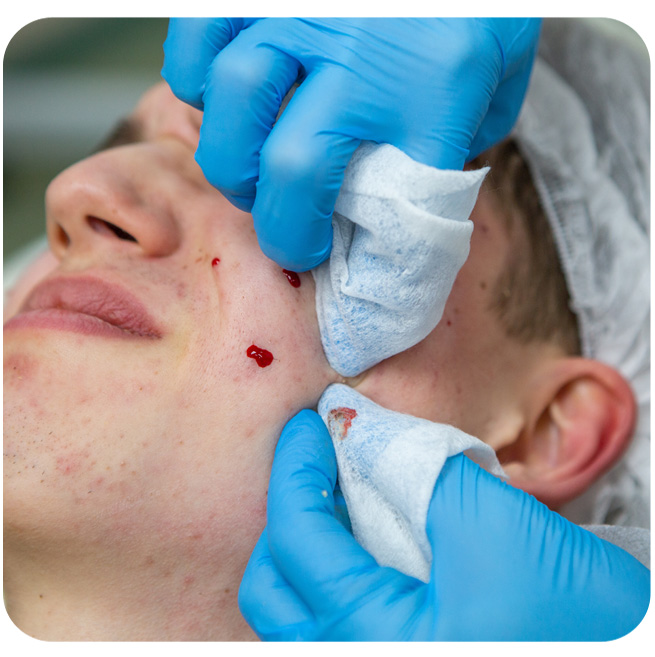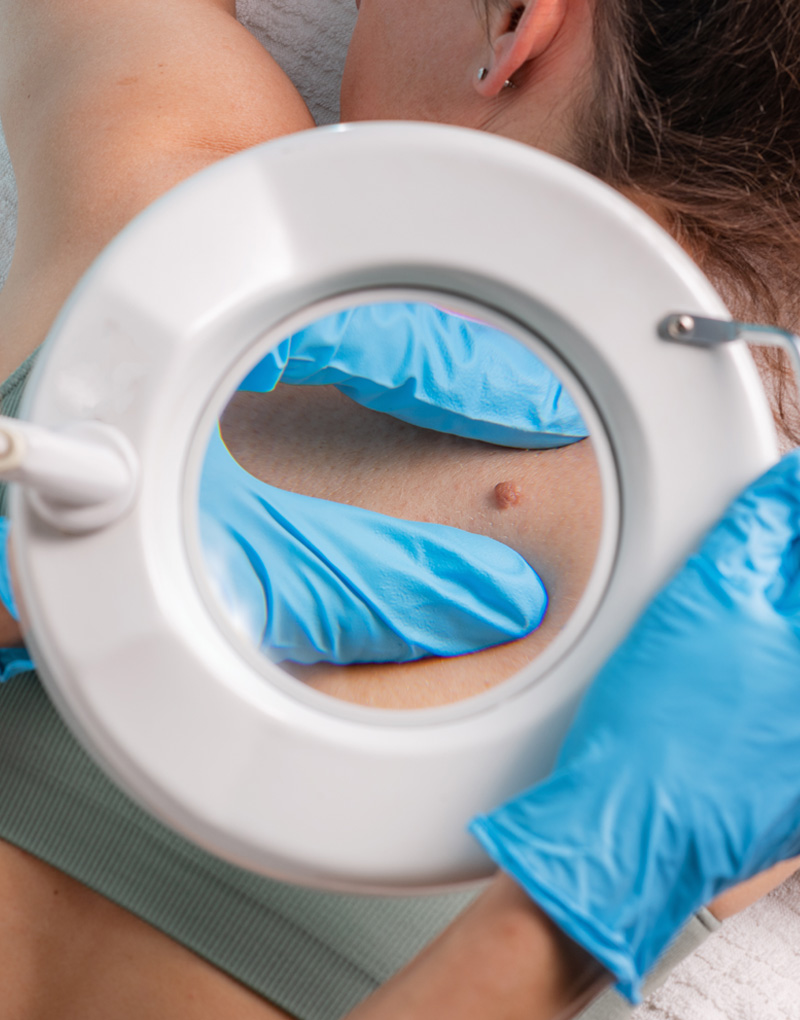The treatment area will be cleaned and sterilized on the day of the procedure to prevent infection. Our doctor may mark the mole and the surrounding area to ensure precision during removal.
A local anesthetic will be injected into the skin around the mole to numb the area. It ensures that you won't feel any pain during the procedure. In some cases, if the mole is particularly large or sensitive, you may be given a mild sedative to help you relax.
The procedure to remove the mole depends on the chosen method:
Excision (Surgical Removal) :
The doctor will use a scalpel to cut out the mole and a small margin of healthy tissue surrounding it. The wound will then be stitched closed with sutures. In most cases, stitches are dissolvable, but sometimes, they may need to be removed after a week.
Shave Removal :
The doctor will use a surgical blade to shave the mole off the skin's surface for raised or smaller moles. No stitches are required, and the wound usually heals with minimal scarring.
Laser Removal :
Laser light breaks down the pigment in the mole, causing it to fade and fall off gradually over time. This method is used for smaller, superficial moles and doesn't require stitches.
Cryotherapy (Freezing) :
Liquid nitrogen is applied to the mole to freeze it, causing the mole to blister and fall off in a few days. This method is often used for non-cancerous moles or skin tags.
Electrosurgery (Cauterization) :
High-frequency electrical currents are used to burn off the mole. This method can also help control bleeding during the procedure. The mole is destroyed at the base, and the treated area will form a scab that falls off after a few days.


